Why Sun Protection:
The length of telomeres at both ends of our chromosomes determines our human lifespan to a certain extent. Because every time a cell divides, the telomeres at the top of the chromosomes shorten. When the telomeres can no longer be shortened, the cells will no longer divide. At this time, cells reach the generally accepted limit of 100 divisions and begin to die. Telomeres are rich tandem repeat sequences located at the ends of linear chromosomes. Our human telomere structure is (TTAGGG)*n. As the number of cell generations increases, the length of telomeres gradually becomes shorter, at the same time, because the length of cell telomeres in the tissues of older individuals is shorter than that of younger individuals, telomeres are biologically regarded as molecular markers of cellular aging.
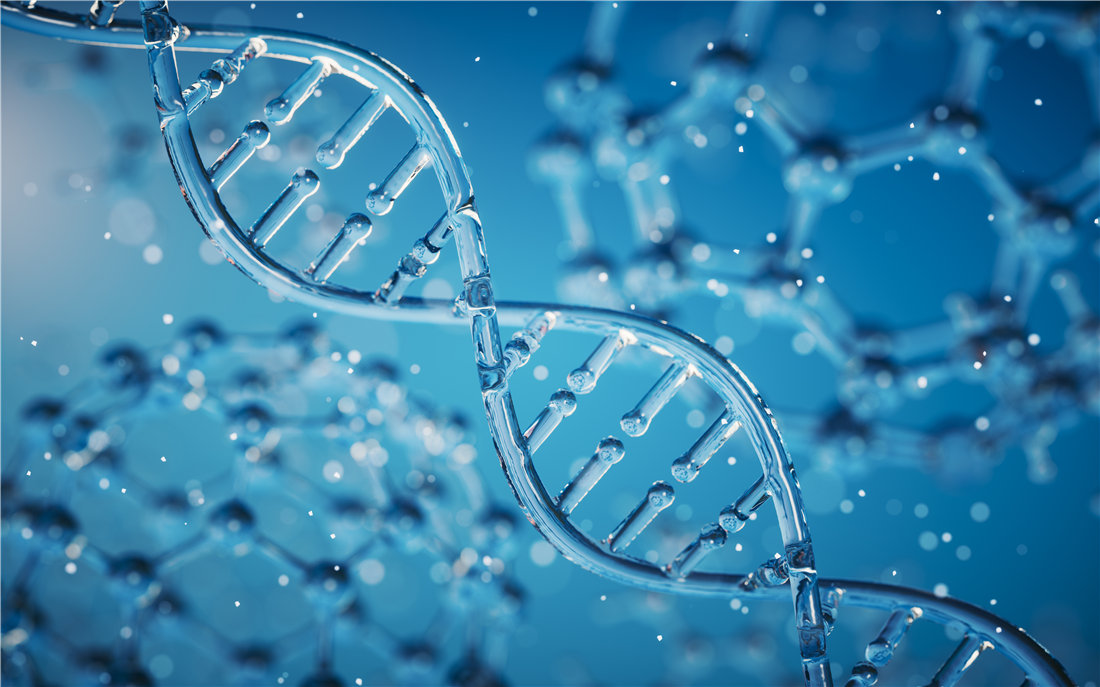
If we are exposed to high-intensity ultraviolet rays every day, the telomeres will absorb the ultraviolet energy to ensure that the DNA is not damaged, which will also shorten the telomeres. Domestic and foreign studies have shown that since DNA is the main target of cell damage caused by ultraviolet rays, natural aging and photoaging can ultimately shorten telomeres through different mechanisms, thus causing a series of changes related to aging.
To exaggerate and magnify, the above are the reasons why we need sun protection. Fortunately, we have the protection of the atmosphere, which helps us block most of the ultraviolet rays, then we have to do the rest ourselves. Firstly please let us understand ultraviolet rays.
What is Ultraviolet Rays:
Ultraviolet rays are light with a wavelength of 10nm to 400nm in sunlight. From a rough analysis, it can be thought that the ultraviolet rays radiated by the sun include UVA, UVB, and UVC.
1)UVA wavelength is 320nm~400nm, long wave. It has strong penetrating power and can penetrate most transparent glass and plastic. More than 98% of the long-wave ultraviolet rays contained in sunlight can penetrate the ozone layer and clouds to reach the surface of the earth. UVA can directly reach the dermis layer of the skin, destroy elastic fibers and collagen fibers, and tan our skin;
2)UVB wavelength is 280nm ~ 320nm, medium wave. Its shorter wavelength part will be absorbed by transparent glass. Most of the medium wave ultraviolet light contained in sunlight is absorbed by the ozone layer. Only less than 2% can reach the earth's surface. In summer and afternoon, it will especially strong. UVB ultraviolet rays have an erythema effect on the human body and can promote mineral metabolism and the formation of vitamin D in the body. However, long-term exposure can cause redness, swelling and peeling of the skin;
3)UVC wavelength is 100nm ~ 280nm, which is short wave. Its penetrating ability is the weakest and cannot penetrate most transparent glass and plastics. The short-wave ultraviolet rays contained in sunlight are almost completely absorbed by the ozone layer.
“The earth's ozone layer blocks 97-99% of the ultraviolet radiation that penetrates the atmosphere. 98.7% of the ultraviolet radiation that reaches the earth's surface is UVA. UVC and higher energy radiation contribute to the production of ozone and the formation of the ozone layer. Among them, UVA is the most carcinogenic, and its effects on sunburn and sunburn are 1,000 times that of UVB. UVC is generally blocked by the ozone layer. ”
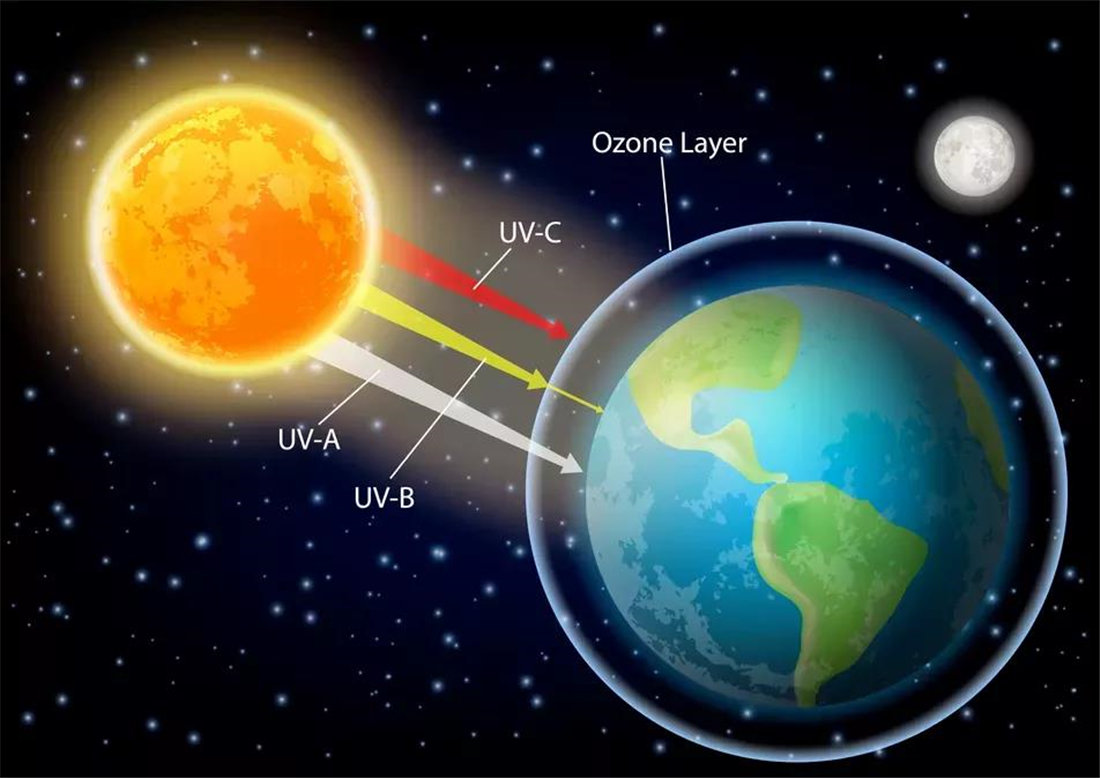
The Principle of Sun Protection:
For the vast majority of people, sun protection is an issue that cannot be ignored, but for those who suffer from skin inflammation or pimples or acne, they should take it one step at a time and solve the problem one by one in a down-to-earth manner. I personally think that when skin problems are obvious, wearing sunscreen may be a burden and may be counterproductive. For example, the high concentration of alcohol in Japanese sunscreen may aggravate inflammation, purely physical sunscreen may cause problems such as clogging pores, etc. At this time, it is more appropriate to adopt purely physical measures, such as wearing a mask, a sun hat, and holding a sunscreen parasol, etc.
There are two principles of sun protection: One is physical sun protection, which achieves sun protection by reflecting or scattering ultraviolet rays. The most common physical sunscreens are Zinc Oxide and Titanium Dioxide. These two have been approved by the FDA as first-class sunscreens. They are highly safe and stable. The disadvantage is that they will deposit on the skin surface, which is called whitening. The size of the particles may also affect the secretion of sebaceous glands, causing blockage.
The other is chemical sunscreen, which achieves sunscreen effects by absorbing ultraviolet energy. Common chemical sunscreens include Octyl Methoxycinnamate, Benzophenone-3, Homosalate, Diethylaminohydroxybenzoyl Hexyl Benzoate, Diethylhexyl Butamido Triazone, Ethylhexyl Triazone, etc. The disadvantage is that most of them are oil-soluble, so the end-products are relatively oily.
Therefore, in order to maximize strengths and avoid weaknesses and provide all-round protection, a combination of physical and chemical sunscreens is also the formula strategy of many brands.
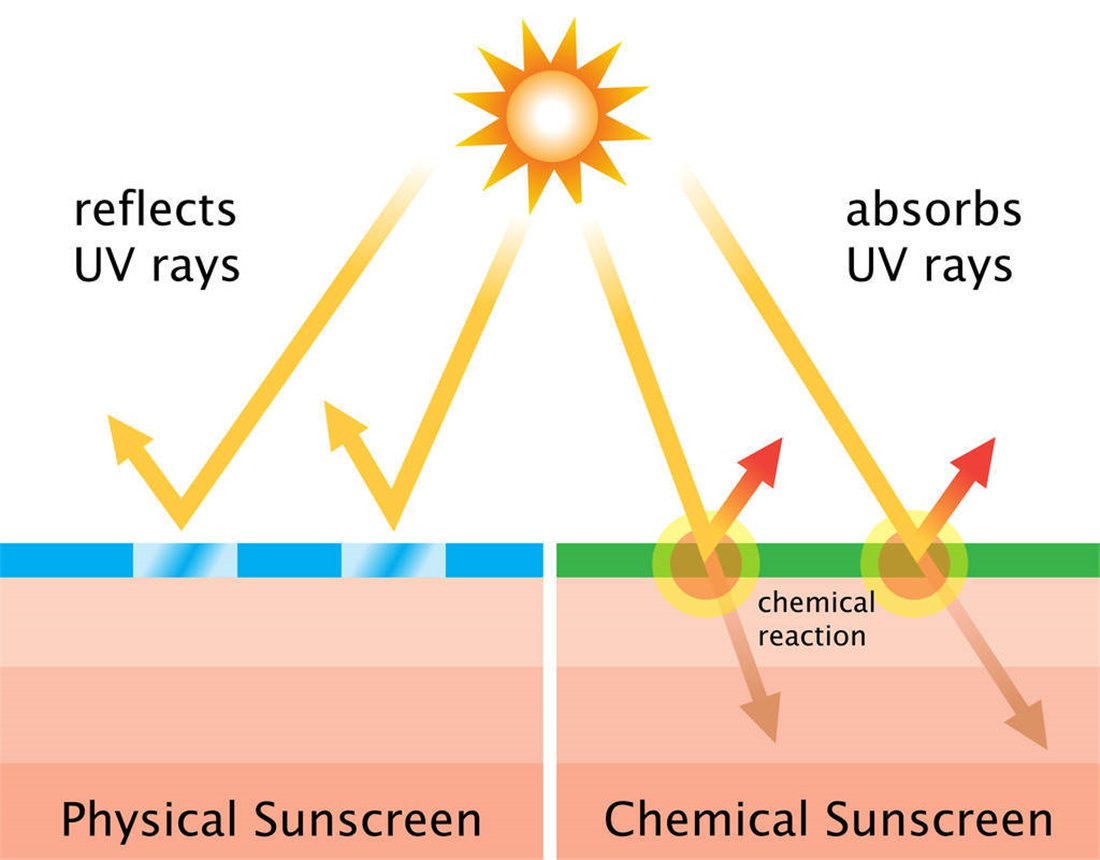
Know About Sunscreens:
Sunscreens play a direct and decisive role in sun protection. Let us list some sunscreens below:
(1) Ethylhexyl Methoxycinnamate(Octinoxate), the abbreviation is OMC:
Ethylhexyl Methoxycinnamate(OMC) is the most common UVB sunscreen on the market and is widely used. As a UV absorber, Ethylhexyl Methoxycinnamate has a large conjugated π bond in its molecule, this conjugated structure can be seen as having a benzene ring as the core, with one side extending to include the oxygen atom in the substituent methoxy group, and the other side extending to the double bond and ester group in another substituent.
This conjugated structure determines the material's ability to absorb ultraviolet light. Ethylhexyl Methoxycinnamate can absorb ultraviolet rays in the wavelength range of 280nm to 320nm, with maximum absorption at 311nm. Therefore, it has a good protective effect against UVB, has high absorption rate, good safety, and oil solubility. Therefore, it is widely used in daily chemicals, plastics, also in fields such as rubber and coatings, as an oil-soluble liquid UVB absorber, it can be compounded with various sunscreen agents. It has minimal toxicity and is relatively safe, with a concentration limit of 10%.
(2) Avobenzone(Butyl Methoxydibenzoylmethane), also called Parsol 1789:
Avobenzone is a major UVA sunscreen agent that can absorb UVA in the 320nm to 400nm band and block some UVA-I. However, the effect on UVA-II is weak, and the maximum absorption wavelength is 357nm, so it is often mixed with benzophenone-3. Although it is highly safe, the biggest disadvantage of Avobenzone is its photostability. After being exposed to ultraviolet rays, it will gradually be decomposed and lose its sunscreen effect, especially when combined with Octinoxate (OMC), it can increase the photoinstability of avobenzone, thus reducing the UVA protection time. Avobenzone can react with minerals to form colored complexes, which have dyeing properties and can stain clothes, so try not to touch them on clothes.
Avobenzone was patented in 1973 and approved in the European Union in 1978. Approved by FDA in 1988. Its use is recognized worldwide. In order to increase its photostability, many companies usually combine it with other sunscreen ingredients to stabilize the system.
(3) Benzophenone-3(Oxybenzone), the abbreviation is BP-3:
Benzophenone-3 is a high-efficiency broad-spectrum ultraviolet absorber, a light yellow crystalline powder, with the advantages of high absorption rate, non-toxicity, non-teratogenic effect, and good stability to light and heat. BP-3 is an effective broad-spectrum absorber with maximum protection in the short-wave UVB and UVA spectra (UVB approximately 285 nm, UVA approximately 325 nm). It is widely used in sunscreen cosmetics such as sunscreen ointments, creams, honeys, lotions, and oils, and can also be used as an anti-discoloration agent for products that are discolored due to photosensitivity.
(4) Octocrylene (2-ethylhexyl 2-cyano-3,3-diphenyl-acrylate):
Octocrylene is also relatively common, it is an oil-soluble spectrum ultraviolet absorber that can absorb UVA and UVB in the mid-wavelength ultraviolet range of 250nm to 360nm. It is often used together with other sunscreen agents in sunscreens, because of its high absorption rate, non-toxicity, non-teratogenic effect, good stability to light and heat, it can achieve a high SPF sun protection index.
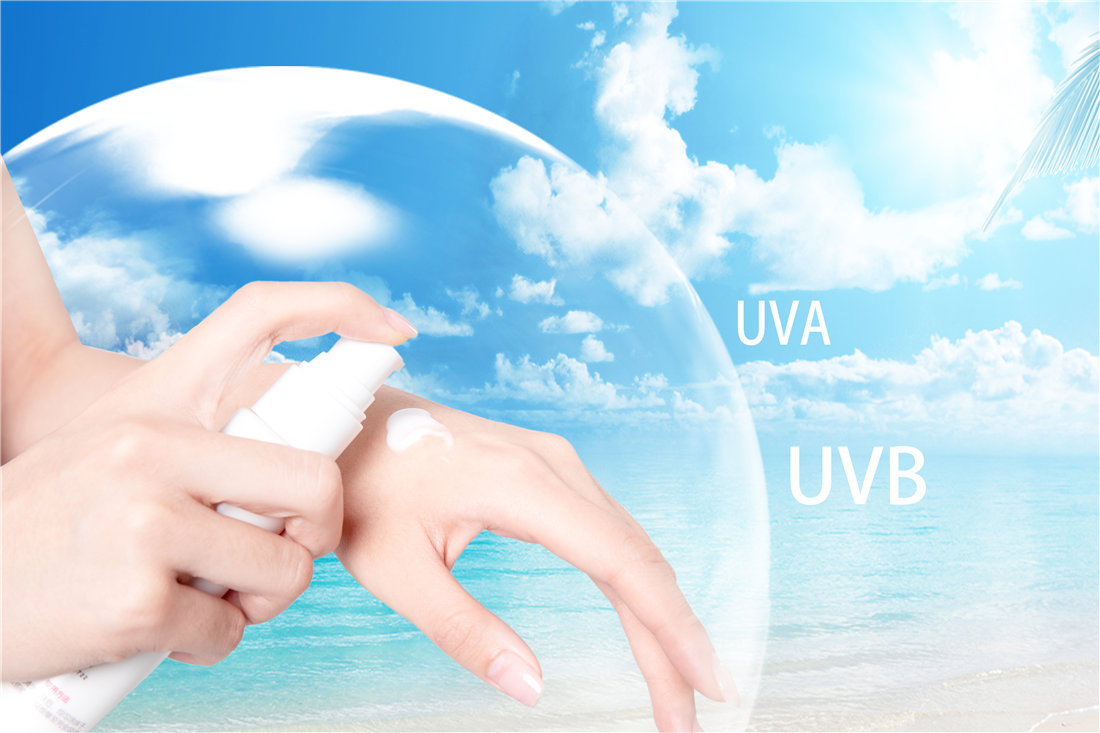
(5) 4-Methylbenzylidene Camphor (4-MBC):
4-MBC is a UVB sunscreen agent that is allowed to be added to sunscreen in China, Australia and Japan. However, the U.S. FDA does not allow its use. European studies believe that 4-MBC is toxic to the thyroid and will interfere with human hormones, and the dosage must not exceed 4%.
(6) Homosalate(3,3,5-Trimethylcyclohexyl Salicylate), the abbreviation is HMS:
Homosalate is an ultraviolet UVB sunscreen agent. It is a colorless and transparent liquid, insoluble in water, and can absorb ultraviolet rays in the UV-B 295nm ~ 315nm band. It is suitable for water-resistant formulas. This product has SPF-enhancing properties, which can effectively protect the skin and reduce skin damage caused by long-term exposure to ultraviolet rays. This product is a general chemical product, non-flammable, non-explosive, non-toxic and harmless, and has good storage and transportation stability.
(7) 2-Phenylbenzimidazole-5-Sulfonic Acid (Ensulizole), the abbreviation is PBSA:
2-Phenylbenzimidazole-5-Sulfonic Acid is a highly efficient UVB absorber with an ultraviolet absorption rate of at least 920 at about 302nm. It can also absorb a small part of the UVA band and is a water-soluble chemical sunscreen agent, often used in conjunction with other ingredients such as Avobenzone, Titanium Dioxide, Zinc Oxide, or Bis-ethylhexyloxyphenol Methoxyphenyl Triazine.
Under sunlight, its protective ability and protective quality will not gradually decrease over time, so it can alleviate the decomposition of other UVB blocking agents in sunscreen to a certain extent. This product has a refreshing and non-greasy texture and can convert ingested ultraviolet radiation into less harmful infrared radiation and heat energy.
(8) Isopentyl-4-Methoxycinnamate (Isoamyl p-methoxycinnamate):
Isopentyl-4-Methoxycinnamate is an ultraviolet UVB sunscreen agent, which is a chemical sunscreen agent. It has been approved for use in the European Union, but Japan prohibits its use with some specific ingredients.
(9) 2-Ethylhexyl Salicylate (Octisalate), also called Octyl Salicylate:
Octyl salicylate has conjugated π bonds, which can absorb ultraviolet rays and convert the ultraviolet energy into heat and release it to achieve the purpose of sun protection. Octyl salicylate can absorb ultraviolet rays in the 280nm to 300nm band and is used as a UVB absorber in sunscreen cosmetics.
Although octyl salicylate has a smaller UV absorption capacity, it is safer and less toxic than most other sunscreens. It is also cheap, so it is a type of ultraviolet absorber that is commonly used.
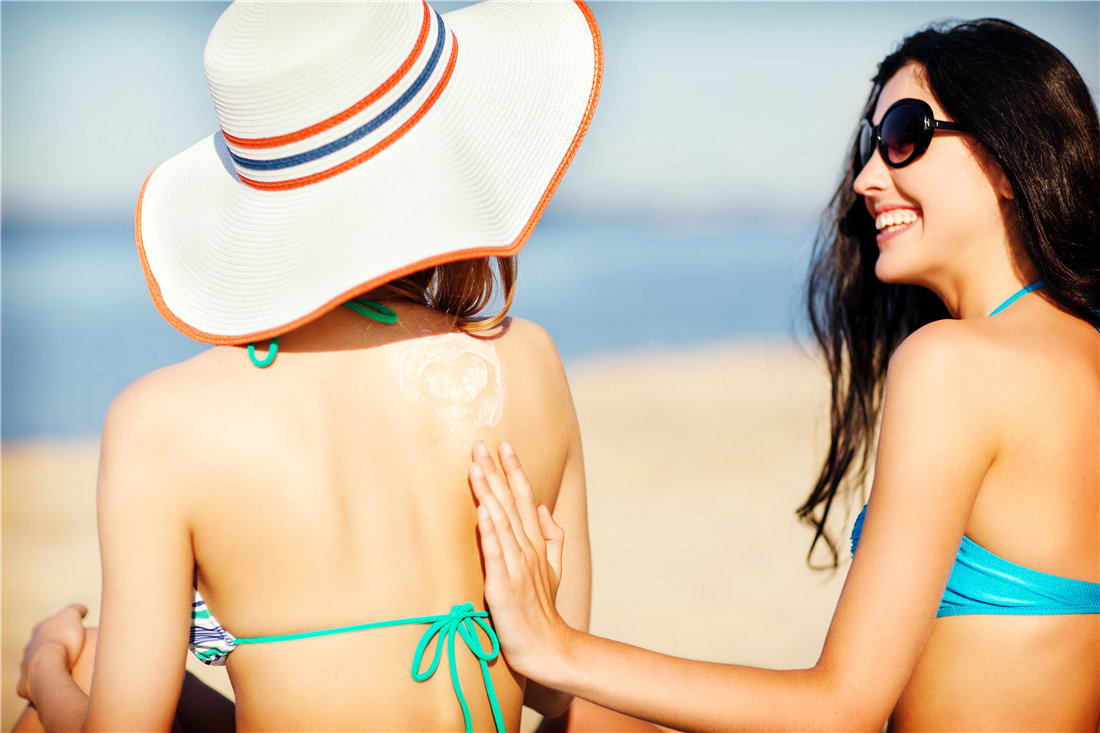
(10) Diethylaminohydroxybenzoyl Hexyl Benzoate (Uvinul A Plus):
Diethylaminohydroxybenzoyl Hexyl Benzoate is a broad-band oil-soluble UV absorber, white to off-white crystalline powder. It has strong absorption of ultraviolet rays in the entire UVA band (320nm-400nm). The formula only needs a small amount to increase the SPF value. Diethylaminohydroxybenzoyl Hexyl Benzoate is also an effective light stabilizer for Avobenzone.
(11) Ethylhexyl Triazone (Uvinul T 150), the abbreviation is EHT:
UV absorber Ethylhexyl Triazone is a white or off-white crystalline powder, a highly efficient and light-resistant UVB absorber with a maximum absorption wavelength of 315nm. It has strong light stability, strong water resistance, and good affinity for skin keratin. Ethylhexyl Triazone can achieve high SPF values at low concentrations, so it has good ecological properties and is ideal for developing high ecological grade formulas.
(12) Bis-ethylhexyloxyphenol Methoxyphenyl Triazine (Bemotrizinol):
Bis-ethylhexyloxyphenol Methoxyphenyl Triazine is a new type of broad-spectrum sunscreen that can absorb both UVA and UVB. It is an oil-soluble chemical sunscreen with good photostability and no estrogenic activity. It has been approved by the European Union. The sunscreen band is very wide, with the maximum absorption peak at 342nm, but after 370nm, the absorption is poor. Bis-ethylhexyloxyphenol Methoxyphenyl Triazine has high absorption efficiency. Using a small amount will have a good effect on improving sun protection. Bemotrizinol can also effectively stabilize Avobenzone, and this stabilizing effect will not be destroyed by other ingredients (such as OMC).
(13) Methylene Bis-Benzotriazolyl Tetramethylbutylphenol (Bisoctrizole):
Methylene Bis-Benzotriazolyl Tetramethylbutylphenol is a water-soluble UVA protective agent. It is an organic large particle molecule that can be dissolved in the water phase. It has high stability. It can not only absorb and convert ultraviolet rays, but also has certain functions of reflecting and scattering ultraviolet rays. The sunscreen band is also very wide. For long-wave UVA, especially the 380nm-400nm band, it is the dead zone of any other sunscreen, however, Methylene Bis-Benzotriazolyl Tetramethylbutylphenol can still maintain some absorption properties. When used together with Bis-ethylhexyloxyphenol Methoxyphenyl Triazine, it can make up for Bis-ethylhexyloxyphenol Methoxyphenyl Triazine's shortcomings in insufficient absorption after 370nm.

(14) Disodium Phenyl Dibenzimidazole Tetrasulfonate (Bisdisulizole Disodium), the abbreviation is DPDT:
Disodium Phenyl Dibenzimidazole Tetrasulfonate is a high-efficiency light-stable UVAⅡ absorber. It is a yellow crystalline powder, basically odourless, and has excellent stability. The minimum UV absorption rate near 340nm is 770. Disodium Phenyl Dibenzimidazole Tetrasulfonate is very safe and has basically no penetration into the skin. Suitable for water-based clear sunscreen products such as gels or clear sprays, as well as creams and lotions.
(15) Titanium Dioxide (TiO2):
Titanium Dioxide is an excellent physical powder sunscreen. It blocks ultraviolet rays UVB and part of UVA through reflection and scattering. It is almost not absorbed by the skin, so it is very safe. However, only a high concentration of more than 5% can completely block UVA rays. Since it belongs to the category of pigments, high concentrations must be added to achieve better sun protection effects, this is why it will turn white when applied to the skin, coupled with its high oil-absorbing and water-absorbing properties, it can easily cause dry skin. In order to improve the use feel and sun protection effect of Titanium Dioxide, it is usually made very fine, but ultra-fine titanium dioxide does not reflect but absorbs ultraviolet rays, and has strong photocatalytic activity, so the process of Titanium Dioxide particles , coating technology, will lead to vast differences in sun protection effects and usage feel.
(16) Zinc Oxide (ZnO):
Compared with Titanium Dioxide, Zinc Oxide has a wider range of UV wavelengths than Titanium Dioxide, covering both UVA and UVB. Sunscreens based on Titanium Dioxide have strong ability to resist UVB, while Zinc Oxide is better at UVA. Similarly, Zinc Oxide not only absorbs oil, but also absorbs moisture, which can cause dry skin after use. Zinc Oxide can be used as a white pigment, so whitening is also inevitable when used on the face.
Post time: Nov-04-2023

